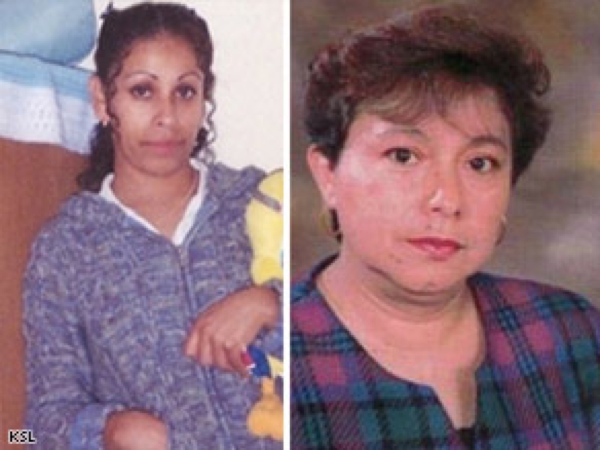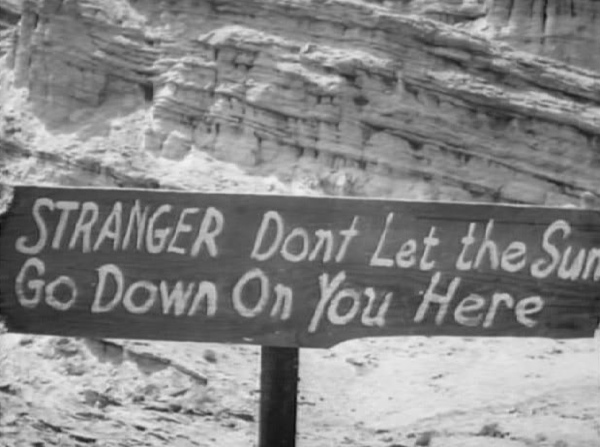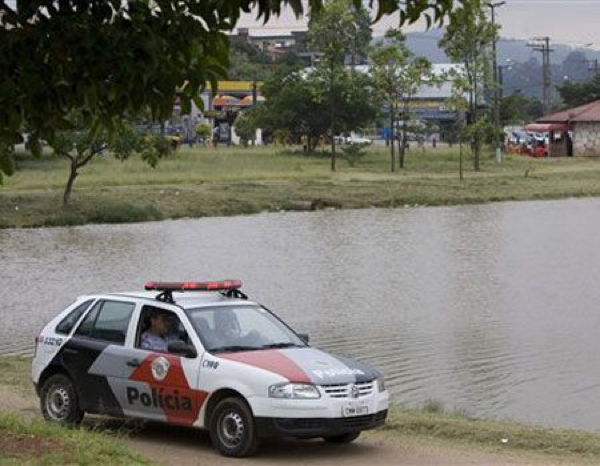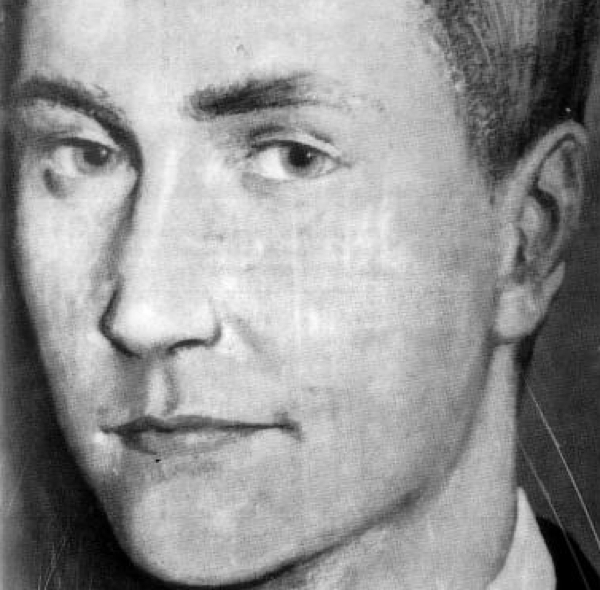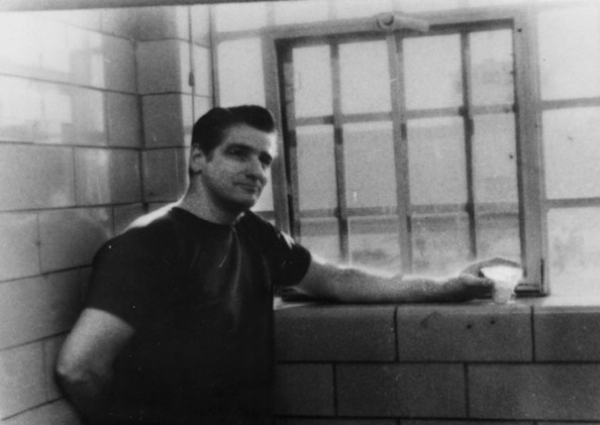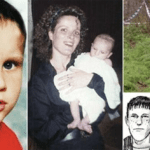We like to think that these murderers will eventually be hunted down and caught—but of course, this is not always the case. Some serial murderers elude capture for years, even decades—and some are never caught. Any one of the ten people below may still be roaming the streets today:
On February 9, in a suburb of Salt Lake City, an Hispanic woman was attacked and murdered while alone in her apartment. Incredibly, the same thing happened twice, in both 2006 and 2008. And though at first the repeated circumstances were taken to be a grisly coincidence, DNA analysis of evidence collected at both scenes would later prove that the murders were committed by the same man, whom the media promptly dubbed the “February 9 Killer.” In the 2006 case, the victim Sonia Mejia was pregnant when she was assaulted and strangled. A few items were stolen from her apartment, but none of them ever turned up. In the 2008 case, Damiana Castillo was strangled in her apartment about a mile away from Mejia’s place. In both cases, there was no sign of forced entry- and while the investigative agencies involved were and still are extremely reluctant to label the perpetrator a “serial killer,” that certainly seems to be an apt description of a man who kills two women in a very similar fashion, on the same date, two years apart. While police have a vague description of the killer, they’re not saying how they arrived at it; and while they have a DNA profile, they don’t have a match for that profile—meaning that unless the perpetrator is eventually made to surrender a DNA sample for some unrelated crime, he may never be caught.
The twin cities of Texarkana, Texas, and Texarkana, Arkansas, have only had one reported case of serial murder, and it was a case that gripped the region in fear for several months in 1946. The attacks came at night on the weekends, roughly every few weekends for that period; in total, five people were killed and three more injured. The case so captured the public imagination that thirty years later, it inspired the horror film The Town That Dreaded Sundown. Only the first victims, Mary Jeanne Larey and Jimmy Hollis, were able to give a description of their attacker—and it was more terrifying than it was helpful. They described a six-foot-tall man with a plain white sack over his head, which had holes cut out for the eyes and mouth. It isn’t known whether or not the killer wore this mask during the other attacks; the only other survivor didn’t get a look. The killer used a .32 caliber pistol, nearly always killed three weeks apart, and always carried out his murders in the dead of night. After one of the murders, Sheriff William Presley exclaimed to the press, “This killer is the luckiest person I have ever known. No one sees him, hears him in time, or can identify him in any way.” This led the press to dub him the Phantom Killer, and the killings themselves have become known as the Texarkana Moonlight Murders. One suspect, Youell Swinney, was imprisoned as a repeat car theft offender in 1947 and released in 1973; he was never charged with the crimes. Though some in law enforcement and the press have speculated that the murders may have been the early work of the Zodiac Killer, this has never been proven in any way.
In the 1970s, being gay in America was a very tricky and sometimes very scary thing. Even in relatively accepting communities, prejudice could rear its ugly head at any moment—and one predator of young gay men of the era seemed to understand this with terrifying clarity. The “Doodler” or “Black Doodler,” as he was variously nicknamed by the press, was so-called because he carried out his murders thus: he would gain entrance to his victims’ abodes as a companion, then sketch them, before stabbing them to death. How creepy is that? Between January 1974 and February 1975, no less than fourteen young gay men were killed. Three more were attacked, but survived—yet the case remains unsolved, because the survivors refused to out themselves by testifying against the prime suspect. Despite the fact that these killings occurred in San Francisco, which was one of the most accepting areas of the US that existed at the time, these victims were more afraid of the ramifications of coming out than they were of the man who tried to murder them. Two of these survivors were public figures—an entertainer and a US diplomat. Harvey Milk, Mayor of San Francisco at the time and a gay man himself, stated, “I can understand their position. I respect the pressure society has put on them . . . my feeling is that they don’t want to be exposed.” Shamefully, the police never named or arrested a suspect, and the case has long since gone cold.
In February 2009, a dog walker discovered a human bone on what’s known as the West Mesa of Albuquerque, New Mexico. This discovery resulted in the largest crime scene, area-wise, in US history—the dumping grounds of an unidentified killer, known to locals as the “Bone Collector.” The remains of eleven women, all prostitutes, were eventually excavated from the area; in the years since, not a single shred of promising evidence has been unearthed. No DNA; no potential murder weapons; no possible character descriptions—nothing has been found. Sex workers in the area still live in fear of the killer, even though no murders associated with him have been reported for years; some unscrupulous clients even gain the compliance of prostitutes by suggesting that they might be the killer. “He is their bogeyman,” said the founder of Safe Sex Work, a local non-profit. Local police have stopped shrugging off reports of rapes and beatings of sex workers in the area, and a “Bad Date List”—a registry of local men who have mistreated prostitutes—is now regularly updated. Local sex workers have become exceedingly cautious, and while this may have played a part in foiling the killer’s activities, his identity is still a complete mystery.
In the early 1970s, a series of brutal killings shook the area around Rochester, New York. The victims were all young girls—but that wasn’t all they had in common. Carmen Colon, Wanda Walkowicz, and Michelle Maenza also happened to have alliterative initials, leading the press to initially refer to the incidents as the “Double Initial Killings,” later revising this to the much punchier “Alphabet Murders.” Many people were questioned in relation to these crimes, and one suspect who killed himself shortly after the final murder was for a long time thought to be the most likely culprit—that is, until he was posthumously cleared in 2007 by DNA testing. Likewise, an uncle of one of the victims was thought to be a prime suspect; he was never charged, and was subsequently cleared when DNA testing became available. Rochester native Kenneth Bianchi has long been under suspicion, too. After moving to Los Angeles, he and his cousin committed the murders attributed to the “Hillside Strangler”—and while Bianchi has never officially been cleared of the Rochester killings, he has also never been charged, and still maintains his innocence. Additionally, in 2011, seventy-seven-year-old New Yorker Joseph Naso was charged with murdering four women in California in the late 1970s. He probably wouldn’t have been considered in relation to the Rochester case, but for the names of his victims: Roxene Roggash, Pamela Parsons, Tracy Tofoya and—incredibly—another Carmen Colon. But at the time of writing, Naso’s trial has been repeatedly postponed in the California cases; nor has he been charged with the Rochester Alphabet Murders.
Between 1968 and 1985, a monster stalked the streets of Florence, Italy. He (or she) wielded a .22 caliber pistol, murdering sixteen people (and occasionally mutilating the genitals of female victims) before inexplicably vanishing. The killer almost always struck couples, and police have been utterly stymied in their attempts to definitively solve the case. Over the course of the investigation, they interviewed more than one hundred thousand people; four different men have been convicted of the murders at four different times—and of course, they can’t all be guilty of all the murders. Many others have been arrested in connection with the crimes, only to be released when the killer struck again using the same gun and modus operandi. Independent investigations have arrived at the conclusion that Antonio Vinci, a relative of two other suspects in the murders, is a likely culprit; Vinci is still alive and free, and in 2008 maintained his innocence in a “Dateline NBC” interview. Whoever the monster is—or was—a resolution seems highly unlikely nearly thirty years after the last murder occurred.
Canada’s Highway 16, running for nearly nine hundred miles through the heart of British Columbia, has some of the most incredible scenery of any highway in the world. Strange, then, that it should be known as the “Highway of Tears”—until you consider that it runs through many areas so isolated that nobody will be around to hear the screams, when bad things happen. And they have indeed happened; over the last few decades, no fewer than forty young women have disappeared while hitchhiking on the highway. For years, many blamed Canadian police for failing to make satisfactory investigations. Many of the victims were Inuit or non-white, and some say that the investigation only began in earnest when a white victim was killed in 2002. Officials admit that the area is incredibly difficult to police effectively: logging roads run for hundreds of miles and then reach a dead end; many stretches of the highway itself are deserted, with no towns for miles; and even mobile phone reception is patchy or nonexistent for long stretches. Of course, there’s a strong possibility that the disappearances are the work of more than one killer. A few suspects convicted of murders in the US have fallen under suspicion in relation to some of the Canadian crimes, but nothing has ever been proven—and all of these suspects have been definitively ruled out in at least some of the Highway of Tears cases. As long as the highway continues to offer vast, isolated areas as hunting ground for predators, it seems likely that there will continue to be prey.
The killer known as the “Rainbow Maniac” has for years been targeting gay men in the city of Sao Paulo, Brazil—home to one of the most vibrant gay communities in South America. The area is host to the largest annual gay pride march on the planet, and Paturis Park had become a popular “hookup” spot—until it became a stalking ground for a lunatic. The park has been witness to the killings of thirteen men since 2007. Police believe that the same murderer may also be responsible for three more deaths in nearby Osasco; they also have a hunch that their suspect may be a current or former police officer. Indeed, local papers were reporting in 2008 that retired officer Jairo Francisco Franco had been arrested, and that police were sure they had their man. No charges or conviction were forthcoming, however, and the case remains unsolved to date.
In the late 1960s, three young Scottish women met their end at the hands of a Scripture-quoting murderer who came to be known as “Bible John.” All of the victims were strangled with their own stockings. Additionally, they were all menstruating at the time of their—and this was evidently known to the killer, as pads or tampons were placed near the bodies of all of the victims. Jean Puttock—sister of the victim Helen Puttock—was able to provide the only known description of the killer after sharing a taxi with him (and her doomed sister) for an hour. The man had identified himself as “John Templeton,” and had extensively quoted from the Bible, and even referred to the types of dance halls in which he met his victims as “dens of iniquity.” After Jean and her date exited the cab, Helen continued on with John—only to be found dead the next morning. The man disappeared without a trace.
One day in July, 1962, the Boston Herald screamed from its front page, “Mad Strangler Kills Four Women In Boston!” It was a case that gripped the public’s imagination—and its resolution may turn out to be no resolution at all. Between 1962 and 1964, thirteen women ranging in age from nineteen to eighty-five were murdered in the Boston area. All were strangled with silk stockings; nearly all were sexually assaulted; and there was never any sign of forced entry into their homes. In October 1964, a man who had been arrested for raping a woman in her own house—Albert DeSalvo—confessed in detail to the killings, and was convicted. DeSalvo was able to describe details of the crime scenes which had not been made public, but inexplicably, he also got many of these details wrong. At the time of his confession, he was an inmate in a mental institution, and was subsequently sentenced to life in prison. But the inconsistencies of his confession—inaccurate times of death, method of strangulation, and so on—were never addressed. More alarmingly, police had always been of the opinion that the murders were likely the work of more than one person—and indeed, DNA evidence has exonerated DeSalvo of one of the killings to which he had confessed. John E. Douglas, an FBI agent who worked on the case and one of the first-ever criminal profilers, has stated that—based on DeSalvo’s profile—he is unlikely to have committed the murders, but very likely to have wanted to claim credit for them. Which means that even though the murders are more than forty years old, the possibility exists that one of the most notorious serial killers in history is still out there. Mike Floorwalker blogs, Tweets, writes, edits and occasionally sleeps.
